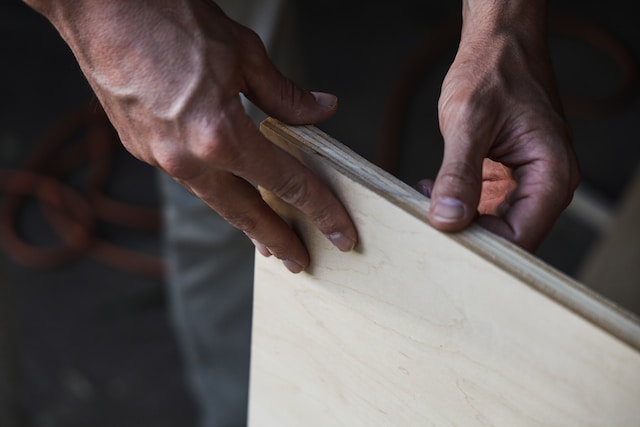If you are a beginner, this detailed guide gives you all the information you need on pipe beveling machines…
Pipe Beveling – What Is It?
Beveling is the process of creating an angle between the end and edge of a tube. This kind of cutting is a very important part of the process of welding preparation and pipe joining. Click here to learn more about bevels.
The tube welding quality depends greatly on how good the bevel on the pipe is. In order to get the best weld joint possible, the welder needs to ensure that the pipe is properly prepared.
Aside from welding uses, beveling can be used to deburr the ends of cut pipes for safety and aesthetic reasons.
What’s the Difference between Chamfering and Beveling?
Chamfering is actually quite similar to tube beveling. In both cases, an angle is created between two surfaces of a tube or pipe.
The key difference between chamfering and beveling is the angle. With a chamfer, two faces are connected by an edge at an angle of 45 degrees. On the other hand, a bevel can have a slope at any angle other than 90 or 45 degrees.
V Bevels and J Bevels
With this method, the metal taken out of the tube section creates a “J” shape. With a J bezel, the angle isn’t really consistent; it curves upwards till it gets to the edge of the pipe.
With the J bezel, the pipes bonding layer will be kept more uniform. In addition to this, less material will be needed to fill in the gap.
Using this method, less welding will be required; as a result, a smaller heat-damaged zone will be created on the tube.
On the other hand, we have the V bevel. With this method, part of the metal is taken off at a consistent angle in relation to the tube’s end.
When a bevel is created on the two sections of the pipe which is going to be beveled, you will notice that the gap created by both edges creates a “V” shape.
In the welding procedure, the molten metal will be filled into the gap. This will provide the bond between both sections.
Methods of Beveling a Pipe
When beveling a pipe, a welder has various options; a torch or plasma cutter, a stationary or portable pipe beveling machine, or by hand grinder.
If a welder is looking for the cheapest method, hand grinding is the best way to go. However, in comparison to other cutting machines, it is also quite dangerous.
Beveling a pipe with hand grinders should only be attempted by skilled operators. Hand grinding is also very time-consuming.
This method of cutting is very messy. In addition to this, it is virtually impossible to maintain the same quality of bevel for each tube you are working on.
The second option to create a tube bevel is a plasma or torch cutter. With the plasma cutter, you’ll get much faster results than when using hand grinders.
The plasma cutter also has its disadvantages. To create a bevel at the tube’s end, you’ll need to use the plasma cutter by hand; as you’ve already guessed, this isn’t safe at all. In addition to this, you will get inconsistent results.
The plasma cutting method will not work for every type of material. As a result, your production flexibility will be affected greatly.
The next option is a stationery cutting machine. Using this method, you have a lot more flexibility and options. Using various tool combinations, you can create almost any kind of bevel shape.
These pipe beveling machines are built to meet a high level of production standards while creating a safe work environment.
You can easily integrate stationery beveling machines into an automated production line. As a result, the operator will not need to manually control the machine constantly.
With a stationary machine, you’ll get various advantages. With this method, you are guaranteed to get consistent pipe beveling quality (this will directly affect the quality of your pipe welding).
The carbide cutting inserts used by these machines are relatively inexpensive and can be replaced easily. These machines require little maintenance and can be set up easily. Visit https://en.wikipedia.org/ to learn about carbide.
Stationery machines are safe to work with and don’t create a huge mess. This method gives the quickest cycle time for each bevel, and also guarantees the lowest overall cost.
You can use these machines with various types of tube materials. You also don’t need to be a very skilled operator to use them.
Lastly, we have portable cutting machines. These machines are available in a variety of configurations. In addition to this, portable machines are one of the safest options.
The main advantage of this option is obviously the portability. Rather than moving the tubes, the user can simply carry the machine to the desired location. This makes them a lot more time-efficient.
Portable machines can be used conveniently on construction sites and for maintenance jobs. However, when it comes to meeting high production standards, they fall short.
Beveling Methods – Choosing The Right One
Before choosing a particular method, there are various factors you need to take into consideration.
First of all, if portability is a must-have feature, you’ll need to consider the size of the machine and how easy it is to move about.
The second thing you need to find out is how long it will take to finish the bevel on each tube. Finally, you should find out how skilled the operator needs to be to use the machine.
Regardless of the requirements, you must take safety into consideration. Some beveling methods are a lot more dangerous than others.
Conclusion
Pipe beveling is a very important part of the welding process. The quality of welding is affected by how well the beveling was carried out.
With the various types of machines available, every welder has different options for beveling pipes. Each type has its advantages and disadvantages.







